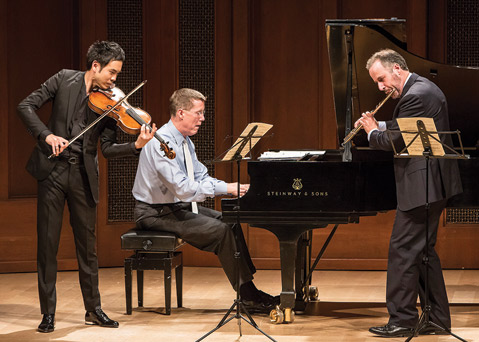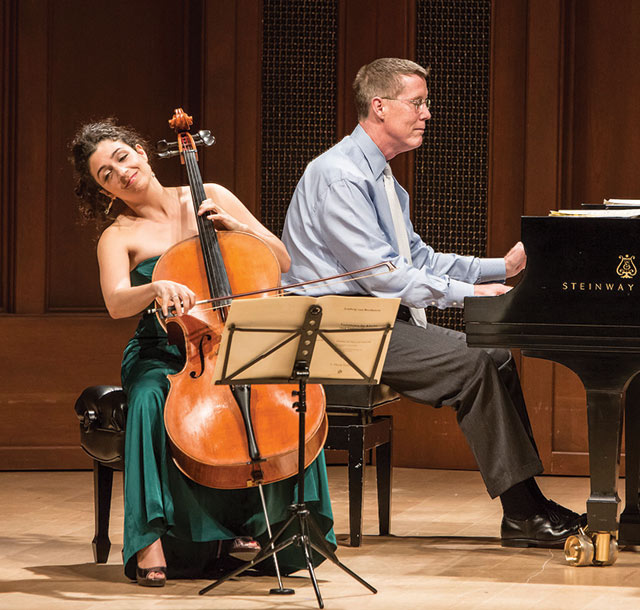Camerata Pacifica
May Concert Featured Works by Duruflé and Fauré

Faced with reconfiguring its May program only a week before the Los Angeles concert, Camerata Pacifica pulled flowers out of a hat — a French bowler in this case — and erected an exquisite spring bouquet on the tripod of Gabriel Fauré, Maurice Duruflé, and Francis Poulenc, with a special world premiere as the central lily. The affable pianist Warren Jones addressed the sold-out audience at Hahn Hall Friday night and explained that principal violinist Catherine Leonard was out with a minor finger injury, but he assured the audience of her return next season, at which point an audible murmur of relief was registered. With that, Jones and cellist Ani Aznavoorian launched into a light-hearted set of 12 variations based on an aria from Mozart’s The Magic Flute. Ludwig van Beethoven’s Variations in F Major (1796) communicates the comic amorous musings originally sung by Papageno in Mozart’s opera. The choice was tonic, an excellent warm-up for a spring evening still lingering in daylight.

Flutist and director Adrian Spence joined Jones next for Poulenc’s Flute Sonata (1957). Originally composed for Jean-Pierre Rampal, the piece makes full use of the flute — high range, dramatic intervals, and double-tonguing. The slow melody of the second movement starts from a high F and descends like a heart-wrenching plaint. After development and return to the theme, the high F sounds again, poised for a repeat. But instead of tipping over, the unaccompanied long tone hangs suspended like an unanswered prayer, and the movement ends. Spence displayed amazing control during this exposed plea.
The tenderest moment of the evening was the world premiere of Soliloquy by Jake Heggie, commissioned by Spence for the late Suzanne Makuch, patron and friend to Camerata. Heggie, who currently enjoys huge success with his operas, exhibits a powerful gift for melody, which finds full expression in Soliloquy. A mere five minutes by the clock, the haunting melody seemed to touch the hem of eternity.
Principal violist Richard Yongjae O’Neill joined Jones and Spence for Prélude, Récitatif et Variations, Op. 3 (1928) by Duruflé. The composer’s only published chamber music, this piece is memorable for its dialogue between viola and flute, with contrasting moods of hope in the latter and sadness in the former. Duruflé, sometimes called “the last impressionist,” writes with the flourishes and flexible harmonics of Ravel and Debussy. Melodies in the solo instruments traverse the key modulations in fresh if complex trajectories.
After intermission, Jones, O’Neill, and Aznavoorian were joined by violinist Ara Gregorian. Fauré’s Piano Quartet in C Minor, Op. 15 (1883), while conventional in structure, is neither flat nor formulaic. Fauré composed the piece at a time of great emotional stress over the breakup of a marital engagement. The “Adagio” expresses depths of grief to match any music written; Jones’s piano arpeggios inclined and declined steadily like ruminating breath. The Camerata strings demonstrated wonderful unity and balance during these sensitive strains. After an exhilarating finale, great applause greeted the musicians in thanks for this performance and for an unforgettable year of varied and brilliant music-making.



